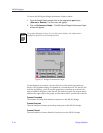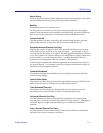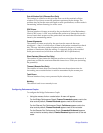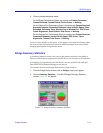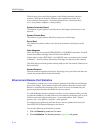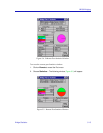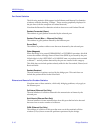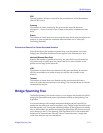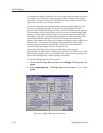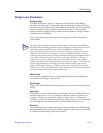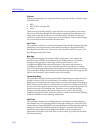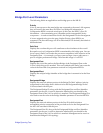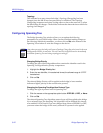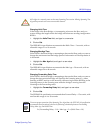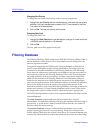
Bridge Spanning Tree 3-17
NB-30 Bridging
CRC
The total number of frames received by the port that had Cyclical Redundancy
Check (CRC) errors.
Framing
The number of frames received by the port from the network that were
misaligned Ñ that is, in which a byte of data in the packet contained less than
8 bits.
Giants
The number of frames that were received by the port which were too large for the
network. A giant exceeds the maximum Ethernet frame size of 1518 bytes
(excluding preamble).
Ethernet and Remote Port Packet Discarded Statistics
These Þelds display the number of packets that were discarded at one of the
bridge ports. Note that the Inbound count applies to the Ethernet port only.
Inbound (Ethernet Port Only)
Displays the number of packets received by the port which were discarded for
any reason (lack of buffer space, the frame time-to-live was exceeded, or the
packet was too large for the network).
LOB
The number of frames that were discarded at the port speciÞcally because the
NB-30Õs frame buffer was unable to keep up with the rate of trafÞc on the
network.
Timeout
The number of frames that were discarded at the port because the frameÕs
time-to-live (the maximum time for forwarding) was exceeded before it could be
transmitted by the port.
Bridge Spanning Tree
The Bridge Spanning Tree window allows you to display and modify the NB-30Õs
bridge port information and protocol parameters relating to the Spanning Tree
Algorithm.
In a network design with multiple transparent bridges placed in parallel (i.e.,
attached to the same local network segment), only a single bridge should forward
data through the LAN, leaving the remaining bridges on the segment in a standby
state so that another can assume the bridging responsibility (should the currently
active bridge go down). The Spanning Tree Algorithm (STA) is the method that
bridges use to communicate with each other to ensure that only a single data
route exists between any two end stations.




